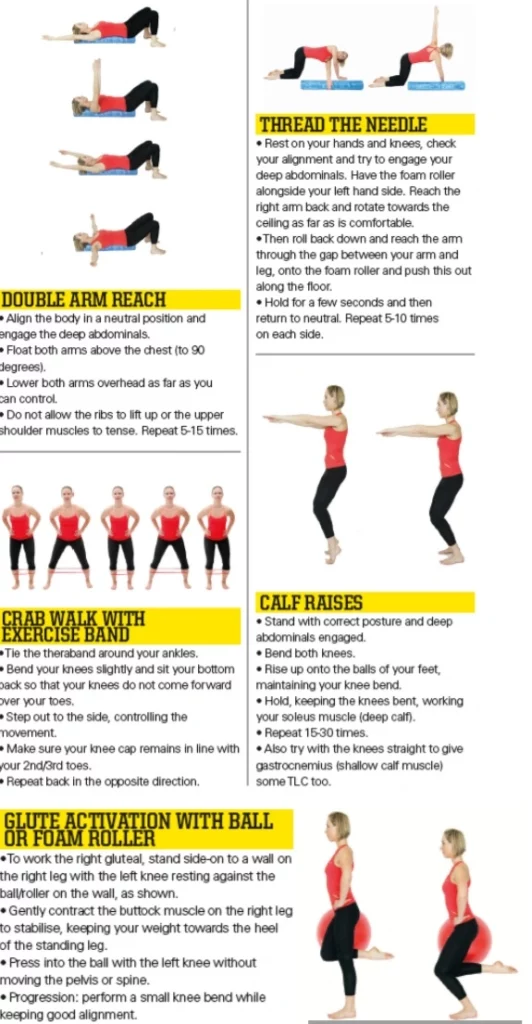Ben Marsh explains that you don’t have to cut out S&C even if you’re tight on time TriathlonPlus Summer 2016
Finding time to do your swimming, cycling and running training amongst busy working and home lives can be tough. Then there is a plethora of evidence saying how vital a strength and conditioning programme is with your triathlon training, it is as important as getting through the miles. Whilst you are working on whittling down the PB, you have to ensure that the muscles are strong enough and the joints are mobile enough to manage this. This can start to feel like an unassailable task!
I’ve designed an exercise programme taking no more than 10-15 minutes –roughly working out as 1% of your day. This programme works on some of the key (and often neglected areas) during triathlon training and, as time is of the essence here, I’ve tried to do ‘two for the price of one’ wherever possible.
First up is an exercise to increase thoracic spine mobility. Long hours spent sitting behind a desk or looking at phones has lead to a gradual stiffening of the thoracic spine (mid back) in the general population. If this is stiff you are effectively competing with a rod down your back. Increasing the mobility here is therefore vital to ensure your body can move effectively, decreasing pressure on other structures and hopefully preventing
injury.
Next up are three exercises to work your glutes and core. The pelvis joins your upper body and lower body, it acts like your fulcrum, and therefore learning how to control it helps with your efficiency at controlling your body during running and cycling. The gluteus medius acts as a brake to stop your leg from rolling inwards when you land, a very common cause of injuries to the leg. The beauty of these exercises is that they are functional and translate easily into running.
Finally, a quick look at your calf, one of the most neglected muscles in triathlon training in my opinion. The calves act as your accelerator and brake pedals during all disciplines of triathlon, giving you that extra push when you cycle and slowing you down when running downhill. Working with both straight knees and bent knees ensures that you are exercising both muscles in your calf and that neither gets left behind.
Try to do these exercises 3-4 times a week, but bear in mind that the more work you put in, the bigger the benefit. You may need to commit around 3% of your day if you are recovering from an injury. If you are concerned or want some more specific guidance then I would recommend seeing a physiotherapist who can provide you a more ‘tailor-made’ programme.

